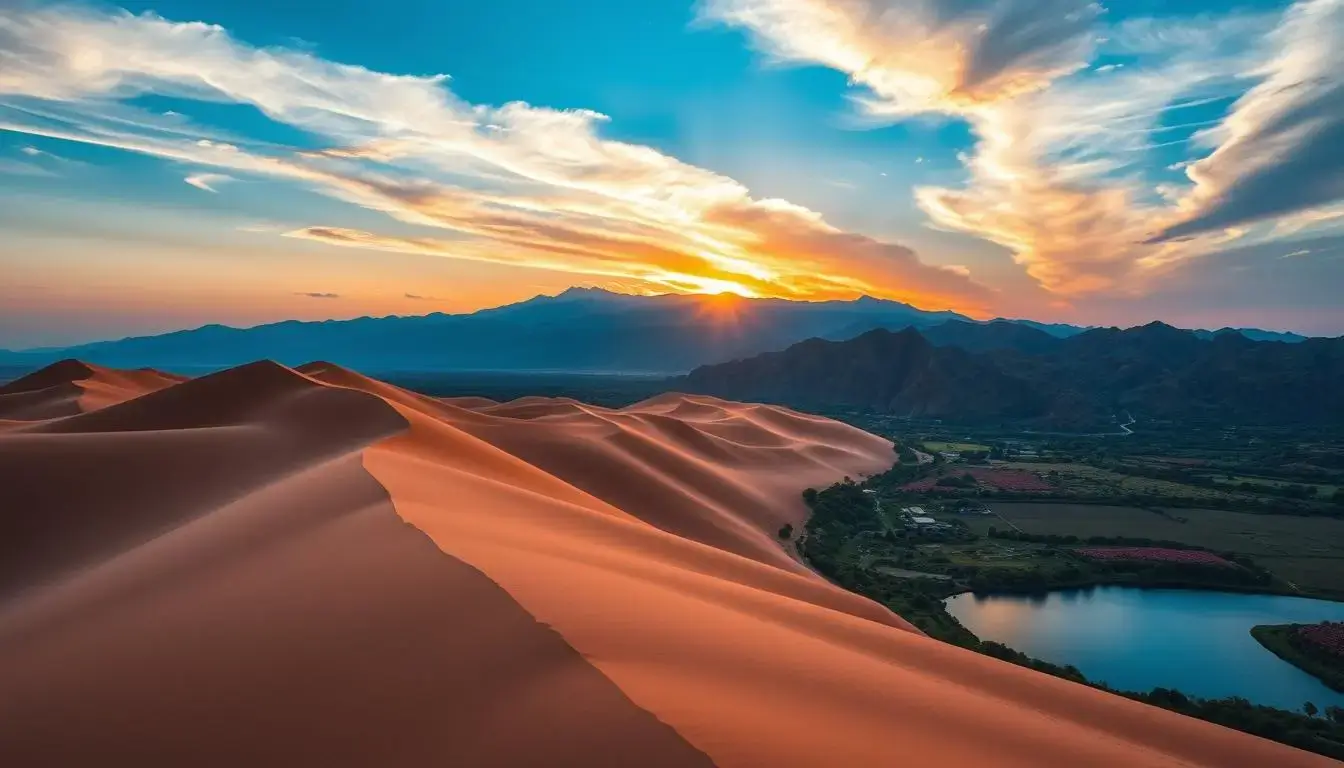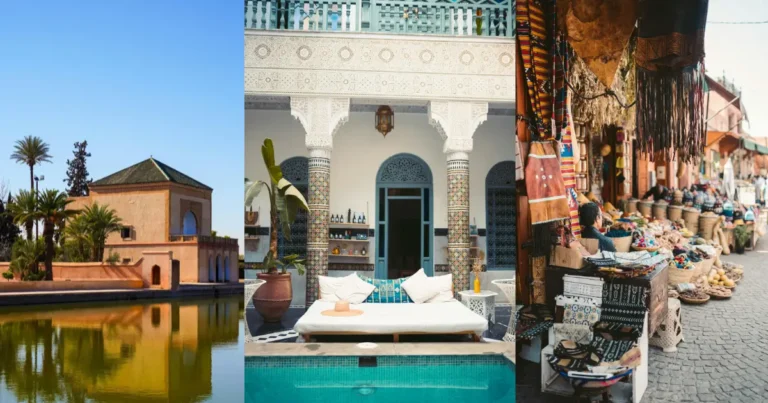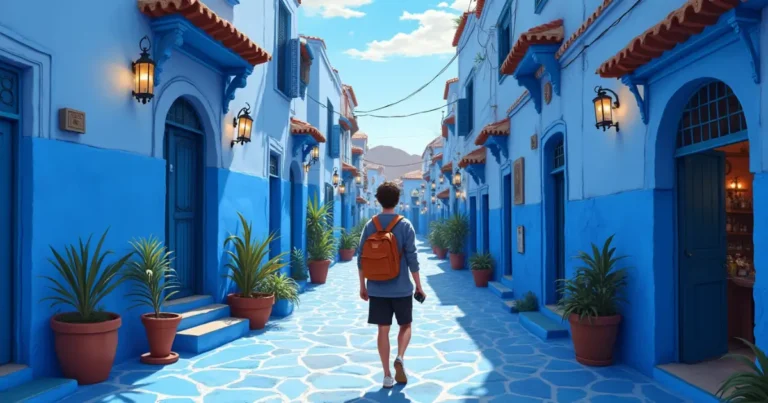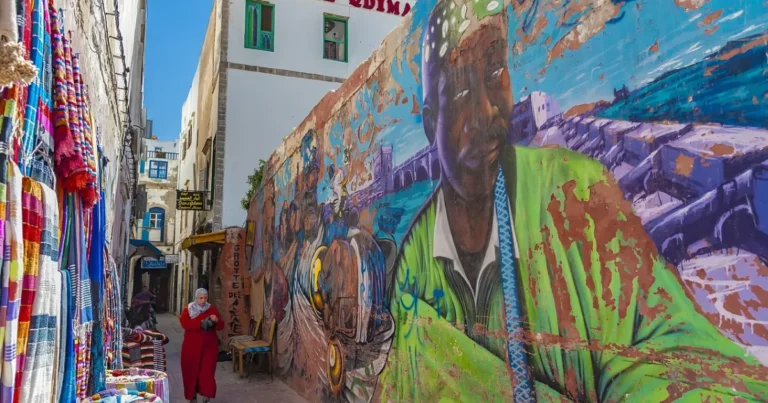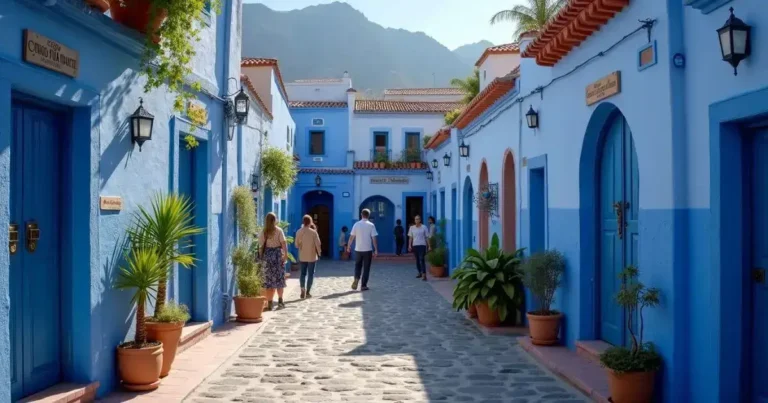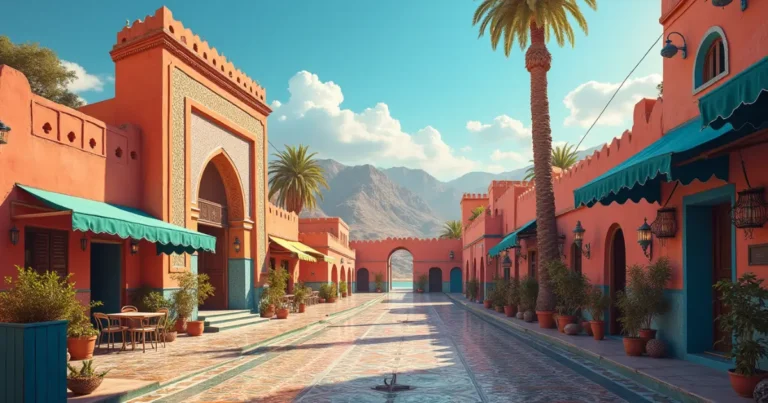Discover the Natural Wonders of Morocco’s National Parks
Discover the Natural Wonders of Morocco’s National Parks
Table of Contents
Did you know Morocco has over 11% of the world’s unique plant species in its national parks? This amazing fact shows the incredible variety of Moroccan natural reserves. It offers a unique chance for adventurers and nature lovers to explore.
Morocco’s national parks offer a breathtaking blend of diverse landscapes. They range from the tough Atlas Mountains to the vast Saharan dunes. These areas show Morocco’s dedication to keeping its special ecosystems alive and supporting biodiversity.
Exploring these untouched reserves will show you incredible geographic variety. You’ll see everything from snow-capped mountains to coastal areas full of rare animals. Each park has its own story of saving nature, culture, and the environment.
Key Takeaways
- Morocco protects over 11% of unique endemic plant species
- National parks span diverse landscapes from mountains to deserts
- Conservation efforts support rich biodiversity
- Parks offer exceptional ecological and cultural experiences
- Moroccan landscapes provide unparalleled natural exploration
Introduction to Morocco’s Pristinessa National Park: Coastal Biodiversity Haven
Souss-Massa National
Park is located on Morocco’s southwestern coast. It’s a key spot for wildlife and ecological diversity. The park covers about 33,800 hectares, giving visitors a unique look at a coastal ecosystem.
Bird Watching Paradise
Exploring the park starts with bird watching. It’s home to over 250 bird species. This makes it a key stop for birds migrating between Europe and Africa.
- Prime bird watching locations along coastal cliffs
- Seasonal migration patterns of rare species
- Specialized guided bird watching tours
Endangered Species Protection
The park is vital for protecting endangered wildlife. It’s famous for saving the Northern Bald Ibis. Conservation efforts are in place to help these birds survive.
| Species | Conservation Status | Population in Park |
| Northern Bald Ibis | Critically Endangered | Approximately 500 individuals |
| Barbary Falcon | Near Threatened | 25-50 breeding pairs |
Coastal Ecosystem Features
The park’s landscape is unique, with rocky coastlines, sandy beaches, and argan forests. This variety of habitats is crucial for many species. It shows the importance of conservation in Morocco.
“Souss-Massa National Park is more than a protected area; it’s a vibrant showcase of ecological diversity.” – Wildlife Conservation Expert
Visitors can see different ecosystems, from the sea to dry lands. This experience shows the beauty of nature in Souss-Massa National Park.
Natural Reserves
Start a journey through Morocco’s amazing natural landscapes. Here, biodiversity thrives in stunning environments. The country works hard to keep its ecosystems safe, creating a network of natural reserves.
Understanding Morocco’s Protected Areas System
Morocco’s conservation efforts are more than just protection. It has a complex system of natural reserves. These areas protect vital environmental zones and include different landscapes.
- Mountain ecosystems in the Atlas Mountains
- Coastal regions along the Atlantic and Mediterranean
- Desert environments in the southern provinces
- Wetland habitats supporting unique wildlife
The Role of Conservation in Moroccan Culture
“Nature isn’t just a destination; it’s our true home.” – Traditional Moroccan Environmental Wisdom
Conservation is a big part of Moroccan culture. Local communities are key in protecting nature. They see it as a sacred duty. It’s a prime destination for adventure and nature enthusiasts.safeguard the environment.
Geographic Diversity of Moroccan Parks
| Region | Primary Ecosystem | Key Wildlife |
| Atlas Mountains | Alpine and Sub-Alpine | Barbary Sheep, Golden Eagle |
| Atlantic Coast | Coastal Marine | Monk Seals, Migratory Birds |
| Sahara Desert | Arid Desert | Addax, Fennec Fox |
Each region shows a different part of Morocco’s natural beauty. Visitors can explore some of the most unique landscapes on Earth.
Toubkal National Park: Crown Jewel of the Atlas Mountains
Toubkal National Park is in the Atlas Mountains’ heart. It’s a top spot for those who love adventure and nature. Here, you can find some of the most beautiful hiking trails in Morocco. These trails show off the stunning beauty of Mount Toubkal, North Africa’s highest peak.
The park encompasses an expansive stretch of rugged mountains. This creates a special place for wildlife and plants. As you explore, you’ll see:
- Dramatic mountain peaks over 4,000 meters high
- Ancient Berber villages on rocky land
- Unique alpine plants found nowhere else
- Challenging high-altitude trails
“The mountains are calling, and I must answer.” – John Muir
Exploring Toubkal National Park, you’ll see amazing wildlife. The park is home to Barbary sheep, golden eagles, and rare plants. These species thrive in the tough mountain conditions.
| Park Feature | Details |
| Highest Peak | Mount Toubkal (4,167 meters) |
| Established | 1942 |
| Total Area | 38,000 hectares |
| Primary Ecosystem | Alpine and Sub-Alpine Mountain Terrain |
Your trip to Toubkal National Park will be unforgettable. You’ll see natural wonders, face tough trails, and learn about the local Berber culture. These communities have lived in the mountains for centuries.
Souss-Ma
National Parks in Morocco: A Complete Guide
Exploring Morocco’s national parks is an amazing journey. You’ll see some of the most diverse and stunning landscapes. From mountains to coastlines, these parks show off Morocco’s rich biodiversity and beauty.
Morocco has a great network of national parks. These parks protect unique ecosystems and wildlife. Let’s look at what makes these parks special:
- Diverse Terrain: Parks cover mountains, coasts, and deserts.
- Rich Biodiversity: They’re home to rare and unique species.
- Conservation Efforts: They work hard to protect fragile ecosystems.
Each national park in Morocco offers a unique experience. Whether you love wildlife, hiking, or just beautiful views, these parks have something for everyone.
| National Park | Key Features | Best Season toVisit |
| Toubkal National Park | High Atlas Mountains, Highest Peak | Spring/Autumn |
| Souss-Massa National Park | Coastal Ecosystem, Bird Watching | Winter/Spring |
| Ifrane National Park | Cedar Forests, Endangered Barbary Macaques | Summer |
“Morocco’s national parks are living museums of natural wonder, preserving some of the most spectacular landscapes on the planet.” – Environmental Conservation Journal
When you plan your visit, think about each park’s unique features. Some need special permits, and others offer guided tours. Always follow local conservation rules and try to leave a small footprint.
Your trip to Morocco’s national parks will be unforgettable. You’ll see incredible beauty, wildlife, and scenery.
Best Hiking Trails and Mountain Adventures
Morocco is a paradise for hikers, with its stunning landscapes and tough mountain trails. You can explore the rugged Atlas Mountains and beautiful national parks. These places are some of the most amazing in North Africa.
Planning your hike in Morocco is key. The country’s varied terrain offers many trails for all skill levels. These routes are both challenging and rewarding.
Popular Trekking Routes
- Toubkal National Park Summit Trail: Climb North Africa’s highest peak
- M’Goun Mountain Route: Challenging trek through remote Berber regions
- High Atlas Mountain Traverse: Multi-day expedition with stunning views
Seasonal Hiking Guidelines
The best times to hike in Morocco are spring (April-May) and autumn (September-October). These seasons have the most pleasant weather for exploring mountains.
- Summer: Extremely hot, best for high-altitude trails
- Winter: Snow-covered peaks require specialized equipment
- Shoulder seasons: Ideal for most hiking adventures
Safety Tips for Mountain Exploration
When hiking in Morocco, safety comes first. Altitude sickness is a big risk in places like Toubkal National Park.
“Preparation is the key to a successful mountain adventure in Morocco” – Local Mountain Guide
- Acclimatize gradually to high altitudes
- Carry adequate water and emergency supplies
- Hire local guides familiar with the terrain
- Check weather conditions before departure
Whether you’re a seasoned hiker or new to the trails, Morocco’s national parks have amazing adventures. They connect you with breathtaking natural beauty.
Moroccan Wildlife: Rare Species and Conservation Efforts
Morocco is home to many unique and endangered species. These animals attract both nature lovers and conservationists. The country’s varied landscapes are key habitats for these rare animals. This makes Morocco a vital spot for eco-tourism and wildlife protection.
Some of the most fascinating moroccan wildlife include:
- Barbary Macaque: The only wild monkey population in North Africa
- Endangered Addax Antelope: Surviving in the harsh desert regions
- Atlas Mountain Gazelle: A rare species adapted to rugged terrain
“Conservation isn’t only about safeguarding animals; it’s about preserving whole ecosystems and cultural heritage.” – Wildlife Expert
Local conservation efforts are key to protecting these unique species. National parks and protected areas are crucial. They help keep biodiversity alive by offering safe spaces for threatened animals.
| Species | Population Status | Conservation Priority |
| Barbary Macaque | Critically Endangered | High |
| Atlas Cedar | Vulnerable | Medium |
You can help these efforts by supporting eco-tourism. By visiting national parks and joining guided tours, you help protect Morocco’s wildlife. Your support also helps preserve the country’s natural heritage.
Planning Your Visit to Moroccan Natural Parks
Visiting Morocco’s natural reserves needs good planning. Eco-tourism in Morocco offers a chance to see beautiful landscapes in a sustainable way. Knowing how to visit these places will make your trip unforgettable and eco-friendly.
For a great trip to Moroccan natural reserves, plan well and get local tips. Learning about these special places will make your journey even better.
Best Times to Visit
When to go to Moroccan natural reserves is key. The best times vary based on what you want to see and where you’re going:
- Spring (March-May): Great for wildflowers and nice weather
- Autumn (September-November): Best for hiking and seeing animals
- Winter (December-February): Good for mountains and snow sports
- Summer (June-August): Ideal for coastal parks
Essential Equipment and Preparations
For sustainable travel in Morocco, pack smart and know the local weather:
| Category | Recommended Items |
| Clothing | Layered, lightweight, breathable clothes |
| Footwear | Strong hiking boots with ankle support |
| Protection | High-SPF sunscreen, hat, sunglasses |
| Navigation | Detailed maps, GPS, compass |
Local Guide Services
Using local guides makes your eco-tourism trip in Morocco better. Guides offer:
- Deep knowledge of the area
- Expertise in safe travel
- Insights into local culture and language
- Practices that protect the environment
“Responsible travel is about connecting with local environments and communities.” – Moroccan Tourism Board
With careful planning, you’ll enjoy Morocco’s natural beauty more and harm it less.
Eco-Tourism Initiatives and Sustainable Travel
Morocco’s national parks lead the way in eco-tourism. They offer a chance to see biodiversity while supporting green travel. The country’s focus on conservation has turned tourism into a force for good.
In Morocco, sustainable travel means connecting with nature and local communities. New projects aim to reduce harm to the environment:
- Community-based tourism projects that help local Berber villages
- Eco-lodges made from traditional, eco-friendly materials
- Tours led by local conservation experts
- Wildlife monitoring programs where tourists can help
“Responsible tourism is not just about visiting a destination, but understanding and protecting its natural heritage.” – Moroccan Conservation Network
Planning an eco-friendly trip? Here are some tips:
- Choose green accommodations
- Follow wildlife observation rules
- Support local businesses
- Reduce plastic and carbon use
| Eco-Tourism Initiative | Impact | Location |
| Atlas Mountain Conservation Program | Habitat Protection | Toubkal National Park |
| Coastal Ecosystem Restoration | Wildlife Preservation | Souss-Massa National Park |
| Community Education Projects | Local Empowerment | Various National Parks |
Your choice to travel sustainably matters. By picking eco-friendly tours and practices, you help Morocco’s conservation efforts.
Cultural Heritage Within Natural Parks
Morocco’s national parks are more than just beautiful landscapes. They are living museums of cultural richness. They preserve centuries of human history alongside stunning natural environments. Exploring these parks, you’ll find a mix of nature and culture.
Eco-tourism in Morocco lets travelers experience authentic culture in untouched natural settings.
Traditional Berber Villages
Inside Morocco’s national parks, traditional Berber villages stand out. These villages show how to live sustainably through old architecture and community ways.
- Stone and mud-brick construction techniques
- Terraced agricultural systems
- Communal social structures
Historical Monuments
The parks also protect important historical sites. These sites show Morocco’s rich cultural history. Visitors can see ancient ruins from different times.
| Monument Type | Historical Period | Cultural Significance |
| Ancient Kasbahs | 12th-19th Century | Administrative and defensive structures |
| Shepherds’ Stone Shelters | Pre-colonial Era | Traditional mountain dwelling techniques |
Local Customs and Traditions
Each national park has its own cultural practices. From traditional music to crafts, these customs are alive in Morocco’s parks.
“Our parks are not just about nature—they’re about preserving our living cultural heritage.” – Local Park Ranger
Visitors get to see Morocco’s unique culture and history by exploring these parks.
Photography and Nature Observation Spots
Capturing the beauty of Moroccan landscapes is more than just taking pictures. It takes patience, skill, and respect for nature. Your trip through Morocco’s national parks will show you amazing diversity. You’ll see everything from rugged mountains to untouched coastlines.
- Use a telephoto lens (200-400mm) for wildlife shots
- Pack a sturdy tripod for landscape photography
- Carry neutral density and polarizing filters
- Wear neutral-colored clothing to blend with surroundings
Some top spots for photography in Morocco’s national parks are:
- Toubkal National Park: Home to mountain goats and Barbary sheep
- Souss-Massa National Park: Spot rare birds and enjoy coastal views
- High Atlas Mountains: Get stunning views of dramatic landscapes
“Nature photography is about patience, respect, and understanding the delicate balance of ecosystems.” – Wildlife Conservation Expert
Always keep a safe distance from wildlife. Use silent camera modes and don’t disturb their homes. Your photos can help raise awareness about conservation. They show the incredible variety of life in Morocco’s national parks.
Conclusion
Morocco’s national parks are a stunning journey through nature and culture. Exploring these places is more than just a trip. It’s a way to connect with the earth’s most valuable ecosystems. By choosing to travel sustainably in Morocco, you help protect rare animals and keep environments safe.
The parks in Morocco are more than beautiful views. They are living museums of nature, showing off different ecosystems. From mountains to coastlines, each park has its own story of survival and protection. Visiting these places makes you part of a worldwide effort to save our planet.
Eco-tourism in Morocco offers unique experiences that teach us about nature and culture. Your choices help local people, save endangered species, and keep these natural wonders intact. By following park rules, supporting local efforts, and sharing what you learn, you help ensure a green future for Morocco’s landscapes.
Thinking about Morocco’s national parks reminds us of the chance to learn and make a difference. These parks are not just places to visit. They are living, breathing worlds that need our care and respect.
FAQ
What are the most famous national parks in Morocco?
Morocco is home to famous national parks like Toubkal National Park in the Atlas Mountains. Souss-Massa National Park is another gem along the coast. These parks are known for their diverse wildlife and stunning landscapes.
When is the best time to visit Moroccan national parks?
The best time to visit varies by park. Spring and autumn offer great weather for hiking. Summer is perfect for mountain hikes, while autumn is best for bird watching.
Do I need a guide to explore Moroccan national parks?
Guides are highly recommended. They know the parks well and can share interesting facts. They also keep you safe, which is important in challenging areas.
What wildlife can I expect to see in Moroccan national parks?
You can see many animals, including endangered species. Souss-Massa is great for bird watching. Toubkal offers a chance to see mountain wildlife and rare plants.
What should I pack for a national park visit in Morocco?
Bring sturdy boots, layers, sun protection, water, and a camera. For mountains, pack warm clothes and consider altitude sickness. Coastal parks need binoculars and light clothes.
Are Moroccan national parks suitable for eco-tourism?
Yes! Morocco focuses on sustainable tourism and conservation. Many parks offer eco-friendly stays and support local conservation.
What are the main challenges in preserving Morocco’s national parks?
Challenges include protecting biodiversity and balancing tourism. Climate change and habitat loss are also big concerns.
Can I camp in Moroccan national parks?
Camping rules vary. Some parks, like Toubkal, have designated sites. Always get permits and follow guidelines. Guided camping is a safe choice.
How important are national parks to Morocco’s cultural heritage?
Parks are vital for preserving nature and culture. They protect Berber communities and historical sites. They show Morocco’s rich diversity.
What conservation efforts are happening in Moroccan national parks?
Morocco is working hard to protect species and habitats. Parks like Souss-Massa focus on endangered species and wildlife corridors.

